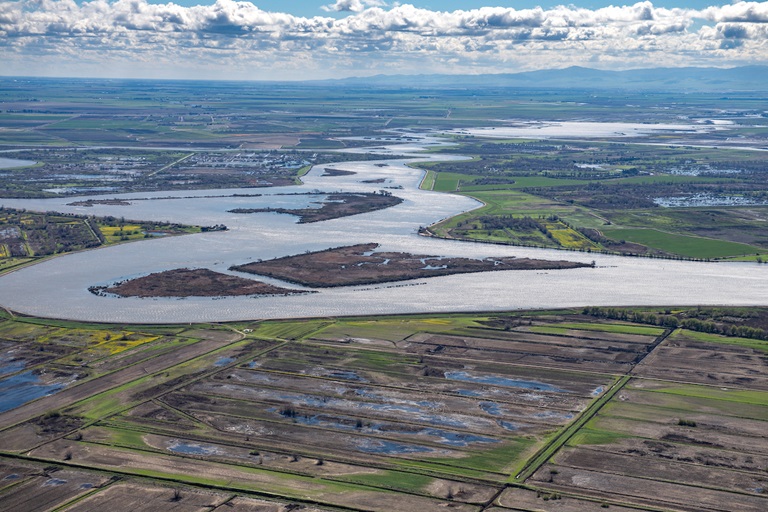Why Delta Conveyance
Aerial view of the Sacramento-San Joaquin River Delta. DWR/2019
Rain and snowmelt from the Sierra Nevada flows through the Sacramento-San Joaquin Bay Delta and supplies drinking water—through the State Water Project (SWP)—to 27 million people. That’s more than the entire population of 48 other states. Yet the reliability of this critical water supply is compromised.
Constraints on the effectiveness of the 1960-era water conveyance system include highly variable precipitation, environmental regulations, more frequent extreme weather events such as flood and drought, climate change, as well as risks from sea level rise and seismic events. Another significant constraint is the limited flexibility of a single water diversion point in the South Delta, which is like having only one faucet to bring water into your house.
According to the United States Geological Survey, there is a 72% chance of a 6.7 or greater magnitude earthquake occurring in the Bay Area by 2043 that could cause levees in the Delta to fail, crippling the state’s ability to deliver clean water. As sea levels continue to rise the Delta will be faced with increasing saltwater intrusion into the inner Delta, which threatens clean water supplies conveyed by the single water diversion point in the South Delta.
Modernizing Delta conveyance would add additional points of diversion along the Sacramento River, increasing the operational flexibility of the SWP, therefore improving the reliability of deliveries to Californians. In 15 years of the 20 years from 1998 – 2018, the SWP delivered 75% or less of the permitted water. Deliveries for eight of those years paint an even more concerning picture with deliveries at 50% or less.
Delta conveyance is an important aspect of modernizing the water infrastructure that 27 million people and California’s economy depend on.
